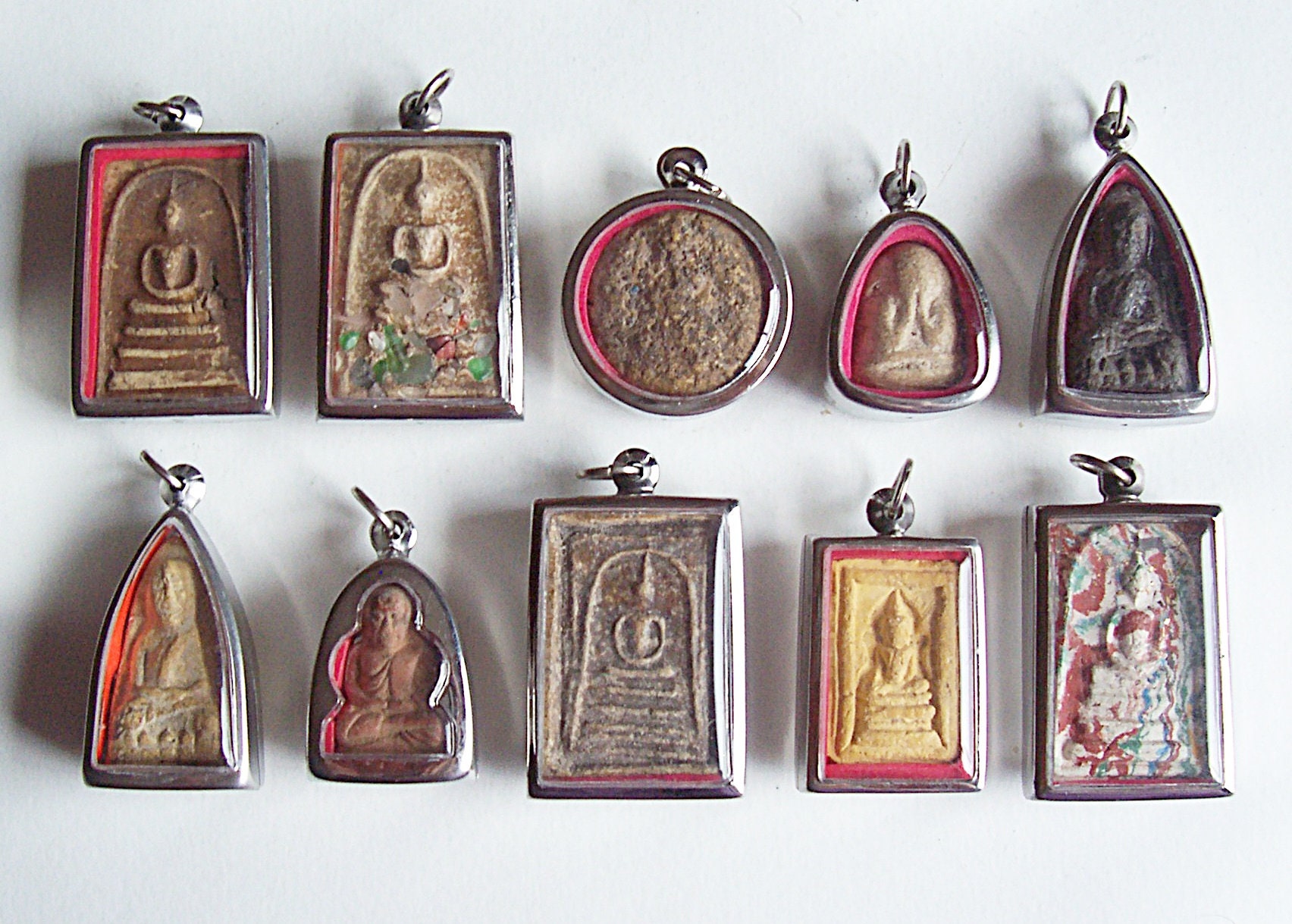Famous Thai amulets [ edit ] 94
by Admin
Posted on 12-10-2023 02:04 PM

Most of the vendors at the thai amulets market want to keep things low-key – they’re not keen about attracting attention from the taxman. Even so, they’re mostly quite open with answering your questions or giving opinions on the amulets on display as well as the images of famous thai monks for sale. If you’re a collector, amulets aren’t something you’d buy in a rush. You need
time
to look and learn about each piece.
 Amulets can be made from a variety of materials including gypsum, clay, various metals and even silver or gold. There are no standard market prices – prices depend on negotiations between the buyer and seller.
Amulets can be made from a variety of materials including gypsum, clay, various metals and even silver or gold. There are no standard market prices – prices depend on negotiations between the buyer and seller.
Thai buddhist amulets are something of an obsession in this buddhist land. Buddhist amulets are part of thai culture and you see them everywhere. Amulets, on the other hand, ward off evil and repel bad luck. The word itself comes from the latin amuletum, ‘to protect a person from trouble”. They can be gems, paintings, rings or pendants, animals, and even words. (talismans, a related form of what we call ‘charms’ bring luck). In most treasured form, the buddha amulet, is known as plah keang. During a deadly drought a thai monk went to the disaster area during a deadly drought to rescue a famous statue of gautama that was in danger of being abandoned.
The very first thai buddha amulets were created with the intention to grant their wearers invulnerability. They were made from medicinal plants like wan – a group of flora believed to provide safety, and had depicted lord buddha, according to spurlock museum. They were later made with stronger materials like clay and limestone. When the 19th century hit, thailand’s buddhism community incorporated more hindu-brahman beliefs as well as art styles. From then on, sacred diagrams and symbols were placed onto the amulets, in addition to images of lord buddha. Image credit: เบญจภาคี-มรดกไทย whilst we can still find some of these amulets created all those centuries ago, it’s rather difficult and expensive.
Post date: 7/5/2018 author: david marcus reading time: 4 minute read illustrating the buddha sitting on a porcupine, this terracotta amulet is of the pan variety, a popular form that protects the wearer from danger. It resembles those made at wat bang nom kho, ayudhaya by luang phor (“reverend father monk”) parn, one of the ten guru monks worshipped in present-day thailand. Thai buddhist amulets like this one function for many thais as both reminders of buddhist teachings and agents of the buddha’s magical power. Conventional amulets depict the buddha in a state of meditation, while others feature images of prominent buddhist monks.
See also [ edit ]
Biography of luang phu sukh of wat pak klong makham tao (chainat)
luang phu sukh, is considered one of the greatest master monks in the history of thai buddhism, and is believed to have possessed the most powerful sychic abilities, and magical mastery, able to perform amazing miracles. Luang phu sukh was born in the year 2390 be, towards the end of the reign of his majesty rama 5.
 Luang phu sukh, was ordained as a bhikkhu at the age of 22, at wat po tong lang nontaburi. Lp sukh’s upachaya ordaining officer, was luang por pra atigarn cheuy jantasiri, abott of wat po tong lang.
Luang phu sukh, was ordained as a bhikkhu at the age of 22, at wat po tong lang nontaburi. Lp sukh’s upachaya ordaining officer, was luang por pra atigarn cheuy jantasiri, abott of wat po tong lang.
Some monks have come out swinging against the so-called jatukam ramathep frenzy, saying it has turned the buddhist priesthood into an “amulet-blessing industry” despite the religion’s shunning of earthly possessions and materialism. Temples across the country are churning out thousands of the disc-shaped amulets, which are about the size of a coffee-cup lid and stamped with anything from images of hindu deities to former thai kings to buddha. To gain maximum “power”, the amulet and its ingredients have to be prayed over by monks for days. A top-of-the-range gold-leaf edition from a well-respected temple costs 10,000 baht (147 pounds) or more -- more than a month’s wages for many thais.
The buddhist knick-knack market published/last edited on 5th september, 2017. While moseying from the grand palace to the national museum, many travellers are inadvertently swept into the bustling talad phra chan, a century-old market specialising in buddhist and hindu amulets, statuary and other sacred knick-knacks.